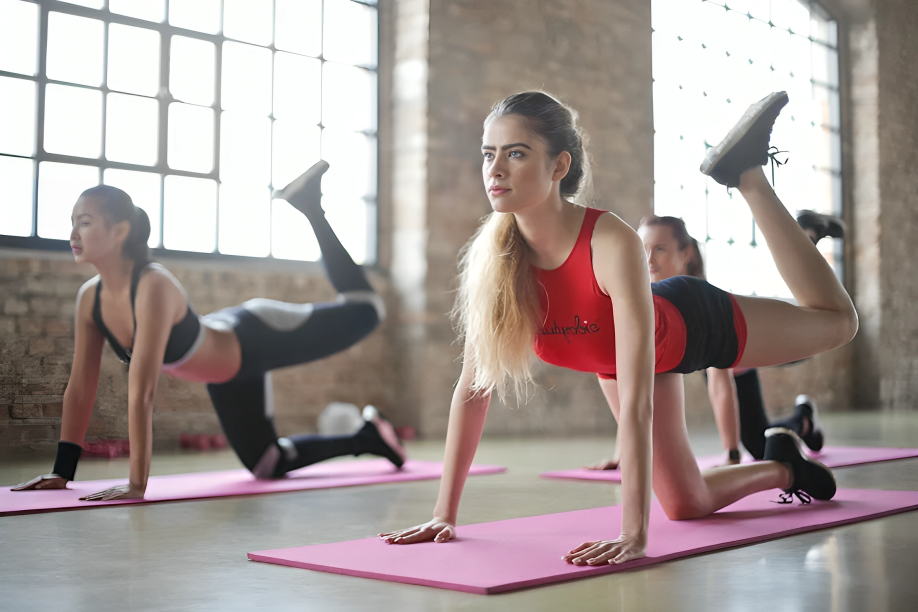Exercise is one of the most vital and least practiced human activities in the modern world, including youth and elderly persons. However, it still stands as one of the best practices for health and the general well-being of an individual. Daily physical activities are recommended as an excellent and healthy way of building the body and boosting mental health.

Why Physical Activity is Important
Rather than a form of exercising, physical activity simply means using our body to be fit. Daily physical activity enhances circulation, bones, muscles, and weight and minimizes the risk of diseases such as diabetes, heart disease, and obesity. Therefore, other than encouraging a good physique, exercising helps reduce stress levels, anxiety, and depression among individuals.
The world today is more embraced by technology implying numerous sitting implications that move an even more essential aspect of overall health. To young people, it is its legislation that has a positive impact on the physical properties of the body than the time spent on a computer or TV And for the elderly, it’s important to maintain the generation of body muscles, mobility, and strength.
Ways to Stay Physically Active
A person doesn’t need to spend several hours a day at the gym to remain physically active. There are many simple and enjoyable ways to incorporate movement into your everyday life:
- Walking or Cycling: Instead of driving to work or for logout shopping, take a stroll or ride a bicycle. Not even a 30-minute walk can be of great help.
- Home Workouts: Strength training exercises, yoga, or bodyweight exercises can be performed at home using very little exercise equipment.
- Sports or Recreation: Commit to exercising, as you swim play basketball, or attend dance classes that you like and can keep up with.
- Stretching and Flexibility Exercises: When done correctly, yoga and stretching can enhance freedom of movement, stability, and overall function and decrease the likelihood of injury regarding regular tasks.
- Active Hobbies: Walking your dog or gardening, going for a hike, or taking a bike ride is a fun way to exercise without realizing it.
Benefits of Physical Activity in Day-to-Day Life
The important things related to physical activity can enhance the health of different aspects of life and mood as well. Some of the day-to-day benefits include:
- Increased Energy Levels: Such as walking escalates blood circulation and oxygen supply to the muscles, therefore enhancing energy levels in the body during the day.
- Enhanced Mental Health: Exercise can help to alleviate stress, anxiety, and depression because it will produce endorphins – the love hormone. It also helps improve sleep and thereby makes one wake up feeling far more alert and energetic.
- Better Weight Management: Physical activity assists in weight management by using caloric energy, preserving muscle tissue, and controlling metabolism Naturally occurring appetite suppressants are hormones in the body, and exercise plays a big role in regulating these hormones.
- Improved Mobility and Flexibility: Exercise helps build muscle and bones, enhances flexibility and durability, and stability also in parts of the body relevant to preventing falls among elderly people.
- Boosted Immune System: Exercise improves immunologic functionality of the body and decreases the incidences of everyday illnesses such as flu and diseases.
WHO Guidelines On Physical Activity
The World Health Organization (WHO) makes it clear about the recommended amount of physical activity that people need for good health:
- Children and Adolescents (5-17 years): At least 60 minutes of moderate to vigorous physical activity every day. This should include muscle and bone-strengthening activities at least three times a week.
- Adults (18-64 years): To engage in moderate activity level for at least 150 – 300 minutes a week; conversely, for vigorous level at 75- 150 minutes. This should be combined with muscle-strengthening exercise on two or more days of the week.
- Older Adults (65+ years): Same guidelines as adult populations but with a stress on exercises that promote balance and flexibility to avoid falls and reduce limitations in motion.
Physical Activity and Children
Kids need to engage in physical activities to grow well. However, the specific amount of physical activity that is recommended daily for kids is hard to meet in this day and age of screens. Regular exercise helps children in various ways such as the development of strong muscles and bones as well as the management of healthy weight and cooking motor skills. It also helps with remembering, paying attention, and academic performance in general.
- Play and Active Games: Promote social engagement and encourage children to remain physically active by engaging in outdoor games, sports, or recreational activities such as riding a bicycle, playing tag, or jumping rope.
- Structured Activities: Give children an opportunity to play sports, and practice dancing and swimming by joining them on different sports teams, dance classes, or swimming lessons.
- Active Family Time: Lead by example and engage in leisure activities as a family such as hiking, playing soccer, or any other physical activity; the family can also engage in such activities often.
Engaging in the latter also contributes immensely towards mental and emotional well-being of the children. It has been shown to reduce anxiety, improve a person’s mood, and increase self-worth. Furthermore, it appears that physically active children also enjoy better sleep, which is essential for both psychological and physical healing.
Physical Activity and Today’s Youth
The young generation these days has grown up in an age where people are surrounded by screens for education, leisure or socializing. However, this has resulted in a drastic decrease in their levels of physical fitness. Sitting comfortably in front of a desktop computer, a tablet, or a mobile phone for long hours promotes a sedentary existence that leads to obesity, diabetes, and psychological problems among other issues.
Promoting regular leisure activities among the youth is of great importance for shaping their overall physical and emotional well-being. For example, physical activity in children and adolescents allows them to keep appropriate body weight, develop strong skeletal systems and muscles, and increase heart health. In addition, it enhances restorative processes in the body, reduces tension levels, and improves school performance due to better focus and mental activities.
Parents, educational institutions, and the community in general are significant factors in the promotion of active lifestyles among young people. They can do this, for instance, by motivating young people to engage in outdoor activities or sports or even go biking and hiking as families.
Physical Activity and Older Adults
It is more beneficial to stay active as we get older because it helps to sustain mobility, independence, and health. Older individuals tend to have such problems as low muscle strength, pain in the joints, and more chronic diseases like arthritis, osteoporosis, and cardiovascular conditions.
Exercising regularly, especially among the elderly, helps to decrease the likelihood of falls, keep muscles from atrophying, and promote flexibility in the joints. Simple and easily performed exercises such as walking, swimming, or even the gentle art of modern yoga work best in keeping the bones of older adults active but do not put undue stress on the joints.
In addition to this, exercise far beyond the physical well-being of an older adult impacts their mental health. For instance, it can alleviate depressive and anxiety disorders, enhance memory and thinking capacity, and even prolong the development of dementia and Alzheimer’s disease. Finally, this model of behavior is also beneficial since it encourages involvement in fitness community centers and provides chances for other social interactions and inclusive activities.
Summary
Engaging in physical activity is a significant part of a healthy lifestyle at any stage of life. For adolescents, activity levels balance the risks associated with long screen hours; for seniors, it is required to maintain their active lifestyle. There is no doubt about the advantages – enhanced fitness, improved mood, and more resistance to diseases. Therefore, there is no reason why each one of us cannot be active and abide by the recommendations of WHO to lead a better quality of life.
One of the simplest yet most effective methods of enhancing one’s general wellness is introducing some physically active component to one’s day-to-day activities either by walking, indulging in sports, or doing exercise drills at home. So let us make health associated with movement at all stages of life.
Stay tuned to inspire4ward for more updates.



